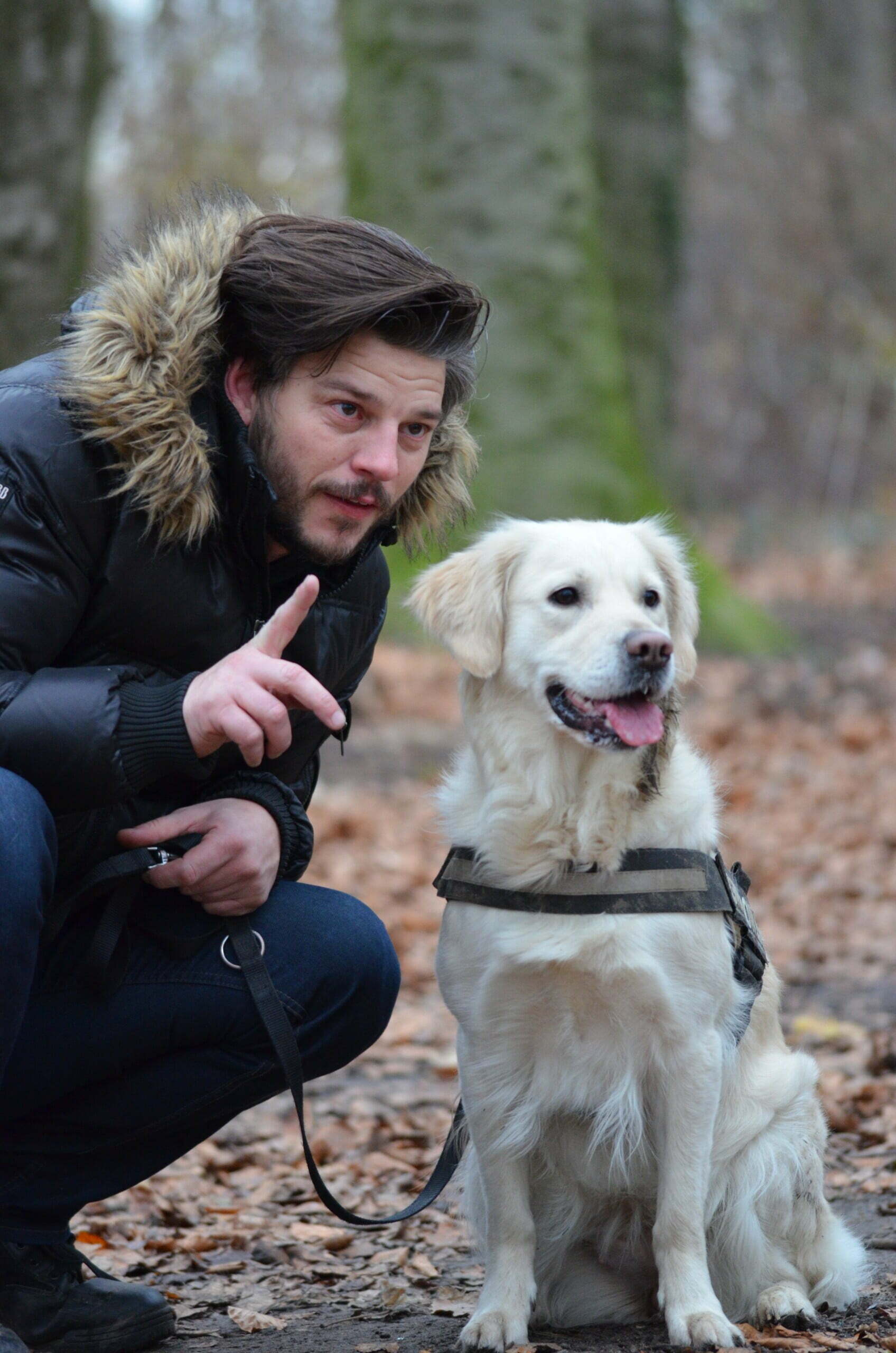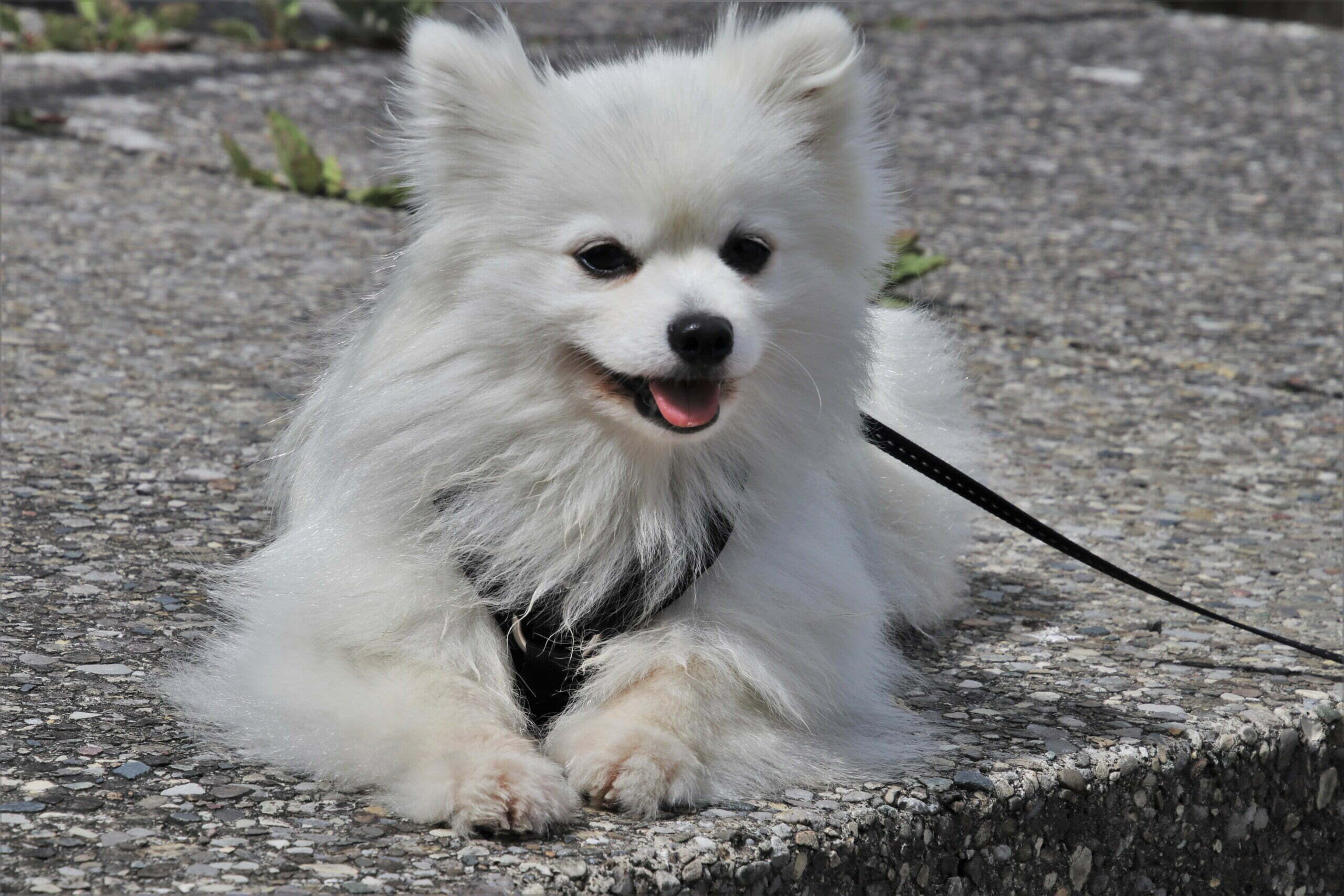Leash Training A Puppy
Leash training a puppy is one of the most important things you should teach your puppy. Although it seems quite easy to witness dog owners walking with their puppy with a leash, it is not as simple as it seems to train them.
Learning how to walk with a leash on is very important for dogs. Walking not only provides the dog’s exercises for growing, but it also helps immensely in improving the balance overall and responsiveness towards their owner.
The key to leash training a puppy successfully is remaining patient and consistent with their training. You just have to remember the key features and enjoy the walks with your puppy. You will love the process. Let’s see what leash training a puppy looks like and how you can also successfully train your little puppy.
Leash Training A Puppy
1. Acclimating The Puppy To Leash And Collar

This is the first method you can use for leash training a puppy. Let’s see how it works.
You have to remain patient with your puppy. This is the most important part of leash training a puppy and introducing a leash to them for the first time. You have to know that your puppy will not learn everything at one go on the first day itself. Proper teaching and training involve calm, consistent practice, and confidence in the puppy.
While being patient is really important, you can also develop some reward systems for your puppy so that they learn faster and the process seems fun to them. The easiest method is to reward your puppy using easily chewable and small treats that they love.
Small and tasty rewards are loved by all the dogs and puppies. But these rewards are also enough to divert your puppy’s attention from their training so take the needed measures. Sometimes you can just play a game involving tug-of-war or fetch game to reinforce good behavior or reward your dog by playing with them.
Another great reward system for your puppy is clicker training. The clickers will allow you to communicate with your puppy more easily and let you know what your dog exactly needs by making noise and delivering the puppy what they want.
The next step involves choosing a good leash and a collar for your puppy. Using a flat, light leash and light collar is amazing to start with and they also allow the puppy to get habitual to having something around their neck. If your puppy is timid and small do not go for crazy choker collars that have fancy stuff attached because they might seem too much on the puppy and irritate them. You don’t want the training to become harder than it is.
You have to give time and allow your dogs to remain habitual or get used to wearing a collar. It is really common for puppies to get nervous when you make them wear the collar for the first time. Some puppies also throw a lot of tantrums or they try to chew their collar to get it out of their head. If this is the case with your puppy too, there are some strategies you may try to get everything sorted.
- Try to distract your dog by putting the collar on while you play with them or you are out in the yard.
- Reward your puppy. Bring out their favorite toys and treats and hand them over to the dogs whenever they wear their collar and leash.
- Make sure you loosen the collar. The collar should be in such a way that it should not fall but it shouldn’t cause discomfort either.
It is time to introduce the leash once you have set the collar nicely. You have to start leash training a puppy at home itself instead of taking them out because of the atmosphere outside and other people might distract them. This can also make some dogs behave crazy while few dogs just shut down and do not move at all.
The first time you are attaching a leash on your puppy, do not hold them tight, just let them play around and you can also play with them to make them feel comfortable with a leash on. Either you can play with your dog or introduce them to the dogs to let them play and enjoy with the leash dragging around them.
You just have to make sure that your dog doesn’t get into trouble by tangling themselves during this process. You can pick the leash up in between and call your dog to reward them with treats. This will make the process fun and nicer for them to feel comfortable.
2. Leash Training A Puppy

You need to create a calm environment for your dog to learn fast. Many dogs and puppies get very excited when they see a leash for the first time. They will spin, bark, whine, and run after spotting a leash in your hand. If this is the case with your dog, you just have to stand perfectly calm and wait for the puppy to calm down a little bit. You need to stay calm and maintain patience during walks with your dog, the dog will also pick the same energy as yours and are more likely to stay calm similar to you. Lead them by example, that’s the trick.
When you take them out, carry some treats with you too. You can just develop habits of keeping some small and easily chewable treats with you during the training process. Make sure the treats are not large in size and are easily chewable because they might interrupt the training process. Some examples you can consider for good treats are little pieces of cheese or small chunks of hot dog.
Just be supportive and patient with your dog. The process is entirely new to them and they don’t even know what the leash is for.
Give your puppy the time to adjust to the idea of walking around with a leash. If your puppy looks kind of nervous, just bend down and pet them to make them feel safe and comfortable. Keep offering them small treats that you bought while walking. Be patient as they get used to the leash walking. This is a very important part of leash training a puppy. You do not have to reward them for bad habits, but there are many simple and easy ways to deal with their bad behavior without acting rudely and being impatient with them.
You have to stop your puppy from behaving badly by addressing their bad behavior every time they do something. Do not ever get angry over the dog or yell or hit them. This can make them really sad. There are many positive and constructive ways to reinforce positive behavior without losing your cool. These are some common examples of their bad behavior and how you can address their bad behavior easily.
- Puppy pulling the leash- If your dog starts pulling the leash, you have to stop walking and stand there itself without moving. Do not yank on the leash, you just have to let the dog know that whenever they pull the leash next time, they are not moving anywhere. Call the dog back towards you to feed them with treats. If you do this consistently every time your dog pulls the leash, they will easily learn in a short time that they are not supposed to do this.
- The puppy lays down or sits- If your puppy resists going out for a walk while you put a leash on, you have to take few steps away from them and then offer them a treat. In this way, they will quickly walk towards you and keep walking by your side. Do this again if they stop walking again. Remember to maintain your calm and remain consistent for leash training a puppy. Slowly they will enjoy the process and being on the leash will make them habitual and comfortable.
The last step of leash training a puppy is remaining consistent. Usually, all the breeds of dogs are eager to learn something new for their owner’s love. They would love to try new things all you need to do is communicate your expectations properly with them without getting angry and impatient. When you reward your puppy consistently for its nice behavior, the dog will understand and stop behaving badly. However, if you are getting angry at them or allowing them to misbehave by pulling the leash over and over again, they will not understand what you expect out of them.
3. Keep The Training Going

Once they have learned to go out for walks with a leash on, it does not mean you have to stop and you can remove out the leash. You have to still practice it with them even after they grow up. Walk your puppy or dog frequently. If possible, take your dogs out multiple times a day. This is a great method for allowing your dogs to reinforce good walk practices. In this way, they will not forget what they have learned.
While you are taking them for a walk, make sure your dog stays in front. This will enable you to establish good control over the doggo and increase their obedience towards the tied leash. If they try to pull back, just shorten the leash or stop. You have to remain calm and attentive, make sure you are not spending time on the phone or getting angry over them.
Try to pay attention to other dog owners when you walk down the street. If you are walking along sidewalks or trails and you notice any dog owner that seems quite weak or nervous, just be prepared to face any undesirable behavior from their dog too. Do not let the dog play with their dog because you never know what may happen.
Another important thing is to choose a piece of proper walking equipment. If your dog has a habit of pulling, you can use a short leash nearly 4 to 6 feet. Regular body harnesses usually will encourage your dog to pull. Do not use retractable leashes because they will end up making your job more difficult to handle. Also, prong collars and choker chains are of no extra benefit, so it is your wish you want to use them or not.
Sometimes you will notice that the puppy starts chewing their leash, it is completely normal. They want to play with everything they get. Do not get angry at them for chewing the leash. You can easily make them get rid of it without getting angry by treating them once they walk normally and stopping their treats when they start chewing the leash or pulling back.
You can also opt for harnesses rather than picking collars for dogs. Harnesses are better as they are safer to use and your dog is less likely to slip. Training a puppy in a harness is the same as leash training a puppy with a collar.
This was all you needed to know about leash training a puppy. You can also bake them delicious cakes at home once they finish their leash training, you doggo love rewards and cakes.

